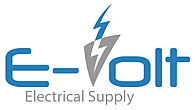Pricing Options and Upgrades
Offering advanced landscape lighting features as options, even if they are not included in the base proposal, is essential for three reasons:
- Thoroughness and Completeness: Listing options makes your proposal comprehensive. It shows that you have carefully considered all the client's needs.
- Competitive Edge: A thorough estimate reduces the chance that another contractor might present a solution you hadn't considered, differentiating your proposal.
- Client Satisfaction and Profitability: Clients appreciate having choices. They may decide to add features now rather than regret not having them later, leading to a more satisfied client and a more profitable project. Even if they defer upgrades, they'll remember the options for future consideration.
To present options in your proposal, use the "base plus add" approach. Start with the base system’s scope and price. Then, list potential upgrades that could be added to the base system. These could include upgraded fixtures, advanced Luxor controls, or other enhancements. For each option, calculate and present a price. Prepare a menu of options with the name of the option, a description of the benefits, and the net cost to the client.
For example, an extra zone of lights to illuminate a modern sculpture might be listed as:
- Additional Zone Lighting: Add $1,200 for four fixtures to enable nighttime enjoyment of a statement sculpture, emphasizing its wood texture.
Include two to three upgrade options in each proposal. Thinking about options will enhance your project design, client satisfaction, and profitability.
Pricing: Good, Better, Best
For some projects, consider offering different levels of equipment for basic and advanced features. Pricing tiers (often referred to as “good, better, best”) help clients understand varying levels of value and the trade-offs between each.
These packages allow customers to select the option that best fits their needs and budget. Different pricing tiers prevent clients from dismissing your single-price bid as either too high or too low since they have an array of prices and options to consider. Clients tend to gravitate toward the middle-priced option, so plan accordingly if you use this approach.
Pricing by Phase
A similar approach can be used to divide the project into modules or phases. Clients can allocate their current budget to the base phase(s) and complete additional phases when timing and budget permit. A phased approach helps strengthen the relationship between client and contractor, leading to positive outcomes for maintenance services and referrals.
| < Additional Estimating Costs |

